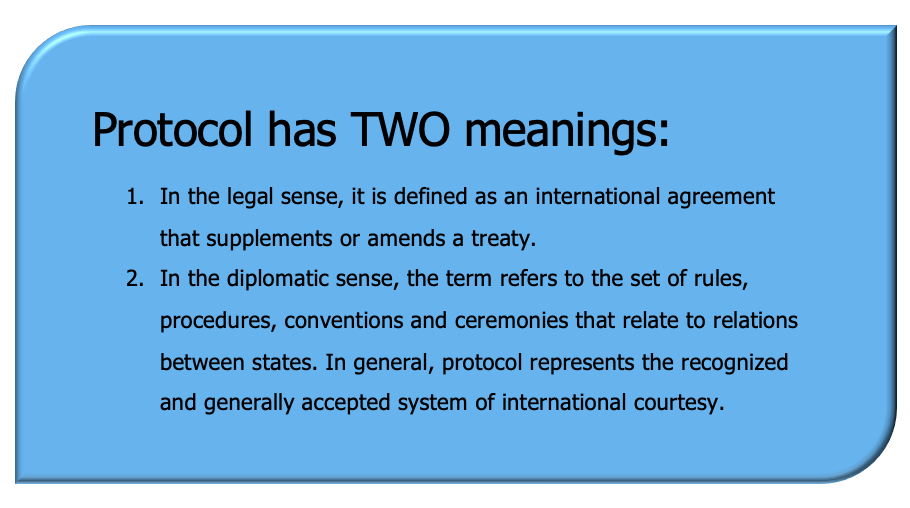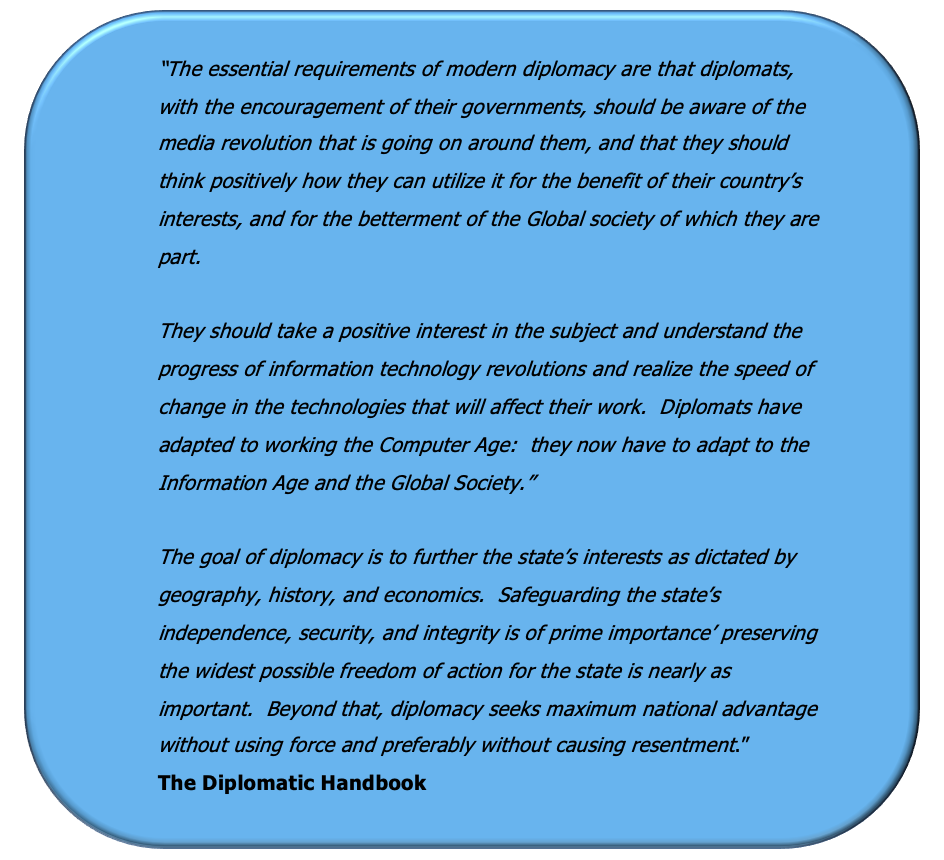6.2 History of Protocol and Diplomacy
Back to: Private: Online – Train to Be an International Protocol Specialist

History of Protocol and Diplomacy
Diplomacy
Diplomacy “is the application of intelligence and tact to the conduct of official relations between the governments of independent states.” Satow’s Diplomatic Practice
“Diplomacy, in theory, seems simple: by treating our neighbors with respect and dignity, we can work through our tensions and bridge our divides. In reality, it’s a delicate art, and the prerequisites for its effective practice include tremendous discipline, acute cultural awareness and mastery of a code of conduct known as diplomatic protocol.” Ambassador Mary Mel French
Origins of Modern Diplomacy
The origins of modern diplomacy are traced back to Northern Italy in the Renaissance era where the first embassies were established in the 13th century. Under Francesco Sforza, embassies were created to encompass the states of Northern Italy. It was in Italy that many of the traditions of modern diplomacy emerged, in particular, the presentation of an ambassador’s credentials to a head of state. The practice then spread to other European powers. Thereafter, the European states recognized that representatives needed to be exchanged to represent their countries. Spain was the first to appoint an Ambassador to the Court of England in 1487. By the late 16th century, permanent missions became the standard.
Modern Diplomacy
“Diplomacy is basically a term that is widely important for international relations between various nations. Diplomacy is the art of negotiations between various countries. In international relations it forms the basis for peace making, economics, culture, trade, wars etc. It is primarily practiced through embassies and consulates around the world, and involves foreign-service officers and ambassadors advancing their governments’ foreign policy objectives while collecting and researching essential political and economic information. “
The Modern Diplomat
Protocol
The term “Protocol” is derived from the Greek word protokollen (protos means the first, and kola means glue). This refers to a sheet of paper glued to the front of a notary document giving it authenticity. Protocol has existed for thousands of years and dates back to scenes painted in Egyptian tombs dictating the rules of various stages of life and death. The walls of Persopolis show the order of procession imposed upon the tribute bearers at the court of Cyrus the Great 2,500 years ago.
Protocol is a code prescribing strict adherence to correct precedence, courtesy and etiquette in matters of military, diplomatic, or official and celebratory ceremonies. It is the set of conventions governing the treatment of specific people or established governmental hierarchy.
It is the application of rank and precedence used when rendering courtesies, honors, and ceremony to certain persons or agencies for events having a defined agenda and sequence of events. More formally, it consists of the rules prescribing the etiquette accorded to ceremonies of state. In the military, it is the knowledge and application of established service customs.

Origins of Protocol – Congress of Vienna 1815
Due to many international incidents with potentially dire consequences, the Congress of Vienna was established in 1815 and an international system of diplomatic rank was created. Nevertheless, disputes on rank continued to reign until after WW11 when the rank of ambassador (ranked according to the date of presentation of their credentials to the host state) became accepted. “The Congress of Vienna’s Reglement of 1815 established an agreed basis for diplomatic representation including precedence and effected the recognition of diplomatic services as a distinct profession within the public service governed by its own internationally accepted codes.
Requirements of Modern Diplomacy

